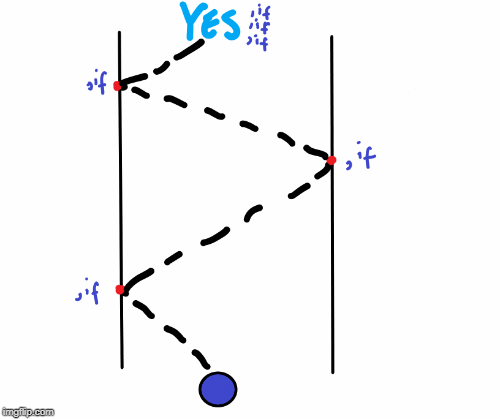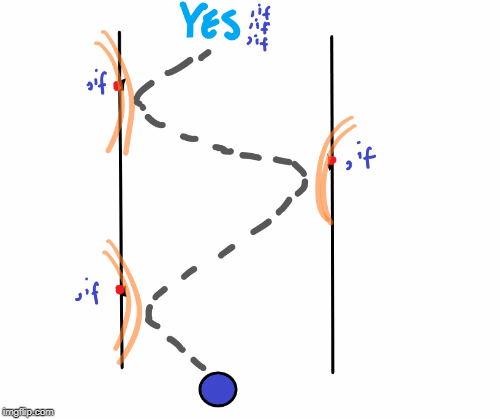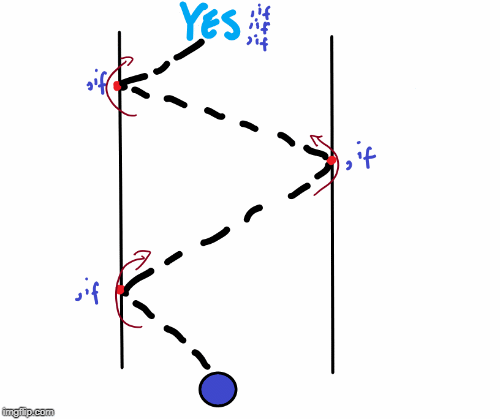How you can navigate to YES and grow a team that can too

How many times have you been in a meeting and someone pipes up and says, ‘Oh…. No, we can’t do that’? When you hear this, you are dealing with someone in the No Corridor. The most important thing you can learn how to do is fight against the No Corridor. The No Corridor is the killer of enthusiasm, productivity and creative culture. Just putting a name to it is oftentimes enough to defeat it.
People stuck in the No Corridor are simply unaware of all the details, the subtleties of the process, or how to best articulate the constraints. They just know that what you’ve said doesn’t fit with their mental picture.
The best people and teams will fight their way out of the No Corridor. They find a way to get to ‘Yes, if’ or ‘Yes, however’, or ‘Yes, but’. It is difficult, but I’ll describe how to grow a team that fights to yes all the time.
Imagine this scenario
You have identified that you need some specialist support to finish a project.
You cannot finish the project without a coding specialist. Your team does not have this unique skill so you scour your teams network for the right person to help you. After a few days, excited about your team’s problem-solving skills and how close you are to finishing you find someone suitable from a consultancy, then speak to HR to find out how to engage them.
You’ve done all the work to get the right skills for your team and project to succeed, and as soon as you speak to HR they say “Oh no, we can’t do that — we don’t have a funding line”. You are now in the darkness of the No Corridor, and somehow — together — you have to find your way to a Yes…. If.
I am sure you have conversations like this before. The frustration you feel is palpable to those around you, but the person you are dealing with only has the process to follow. They aren’t really at fault. They don’t have all the information. They may not understand where there are real constraints and where there are perceived constraints. You can help, and you can grow others who can too.
To help, you need to work out how to be a bumper or a magnet — and find and grow them within your team and organisation. These people help your organisation navigate the No Corridor effectively and efficiently.

The No Corridor
Imagine you have just walked into a dark corridor, the door clicks shut behind you, locked and it is totally dark. No light whatsoever. What do you do?
Most people will put their hands out in front of them, and start walking around trying to work out the shape of the place. Now imagine that this is a corridor that needs to be traversed, someone has asked you to get to the other end. You are in a completely dark corridor, you have your hands out in front of you and you start edging forward.
You have made some progress, edged forward a few steps, then you bash into something — hard. What would you do? You are in a dark corridor, you have no idea what else is in there, what you could bash in to. Many people in this situation will stop and yell out for help. They will say No and stop progress. Feeling helpless they will stop moving forward.
In this situation, someone will hear their cries for help, enter the corridor and find them. They will let them know that they aren’t stuck here, they can keep moving if they head in this direction.
What this helper person let them know is how to navigate the obstacle they are currently stuck in. They can proceed if they understand the conditions and caveats associated with that obstacle. The helper leaves, and the person that was stuck then heads off in the new direction with the knowledge of the if they have collected moving past that obstacle. they stretch out their arms and start edging forward again.
Then they bump into something else — and they stop again. They say no, I can’t move any further.
This is the No Corridor. Every time you start a new project, a new process, try and do something new in an organisation. You are entering a darkened corridor. When you try and navigate it, and reach the end of the corridor you complete that project or create a new process. You find your way through the No Corridor to the Yes.
Working out how to get to the end of the corridor, working out how to navigate that new problem and get to the finish, is the single most important thing you and your team can work out how to do. If you can do this, you can become more productive, more creative, and more efficient. A truly high-functioning team.
It is you or your team in the corridor. The person walking in and helping you pivot and keep moving is the expert in the area you are stuck on, or the person providing the intent and direction. They understand the real constraints and perceived constraints and can let you know the conditions that need to be applied if you are to move past this problem. They let you know the if’s for your Yes. You get the end and you have collected some if’s along the way.
Here is a crappy GIF that I created to explain it. I often draw these on a whiteboard when I am explaining the No Corridor to teams.

Bumpers
If you are navigating this dark unknown corridor, you start to get a sense that you might be about to run into something. However, you do not know enough about the corridor to be sure, so you have to keep going.
Wouldn’t it be nice if someone was standing there, against the wall to gently nudge you off in the right direction without any nasty collisions with the No wall?
These people do exist in organisations. In my weird brain of analogies and metaphors, I call them the bumpers. Like the bumper-barriers at Ten Pin bowling for when you are learning. There is a collision, but you do not lose a lot of momentum. You certainly don’t come to a dead stop.

Bumpers are local area experts. They understand difficult concepts better than most. They can see impending bumps with the wall in the corridor before they happen and let you know how to navigate past them.
They often let you know the if’s that allow you to navigate past them on the way through. These people are those invaluable team members everyone learns about in the organisation. They are outstanding at what they do, the problem is working out you need to speak to them. If you are stuck on the No corridor wall, it may take some time to work out the shape of the obstacle you have run into, and who you need to speak to.
Imagine if, in my example, the HR department had said “Oh no, we can’t do that, we don’t have a funding line. You’re going to have to go talk to Steve in accounts and work out how to get that sorted”.
In this case, Steve would be your bumper. He would let you know what a Yes might look like. He might say, “Yes, we can get that funding line sorted, you’ll need to get the CFO to sign one of these”. That is not a No — it is a Yes, if. Now imagine that instead of having to walk into the No wall with HR, Steve from accounts overhears a piece of your plan and says “You need to consider the funding line approval with the CFO for that type of engagement”.
Steve’s small piece of expertise acts as a bumper. Instead of crashing into a wall, your team progresses in the project knowing that they need to get the CFO and accounts involved. You do not collide, you gently bump off that knowledge and expertise.
Here is another of my GIFs demonstrating the bumper effect keeping you off the No wall in the corridor.

Magnets
These people are your leaders. They provide the guiding intent. They understand the ‘Why’. If you have a strong enough why, you can work out how to navigate the way to a Yes — even if the process is novel or the project is difficult. These are the qualities we espouse in the best leaders. They inspire their teams to achieve things that seem unachievable.
The magnets of your organisation do not normally have a lot of time to guide you through a new process. But they understand what it is you are trying to achieve, they understand the things that are moving outside of this particular project and how they influence your potential success. The magnets draw you to success. They are essential for navigating the No Corridor with maximum effectiveness and efficiency.
Magnets draw the teams forward by communicating strong intent, providing clarity to the required outcomes and clearly articulating the possible obstacles to that success. They understand the strengths of the team and can point out resources they may need to succeed.
In this way the Magnets improve the effectiveness, efficiency, creativity and productivity of the teams they interact with. Here is another GIF I have created that shows (sort of) the influence of Magnets on those navigating the No Corridors. You’ll note the path of the team changes as they get to the same conclusive answer. A Yes with three conditions.

Growing the organisation
The best organisations purposefully grow and retain their bumpers and magnets. They acknowledge the team members that grow into these bumpers and magnets and have systems and training practices in place to continue to grow them in the teams.
What can you do to grow these skills in your teams? How do you grow yourself into a Magnet?
Here’s the thing — there are not any shortcuts. To learn how to be a magnet or a bumper, you have to just suck for awhile. Yep, suck. You will be so annoyed about how slow you are going, how many times you need to check in with someone else for support.
So remember this, when you feel like you aren’t quite getting it, or when everything feels harder than it should be, you are growing a little. All of these struggles you are facing are preparing you to help your colleagues succeed.
However, there are a few things you can work on;
- Be comfortable working at the edge of your knowledge and encouraging your team to as well. It is at the edge of your knowledge that you do your best work. As a bonus, you learn at a higher rate, your curiosity is at its strongest, and you are enthusiastic about tackling the problem.
- Create genuine care in your team, then you can challenge them beyond what they believe they are capable of. Your team needs to know that you understand their capabilities, what they believe about themselves, so that you can get the most out of them.
- Acknowledge peoples pointiness. There are people in your team who are better at some things than others. They may have learnt a little bit more in certain areas than others. They may have experience dealing with certain types of problems. Allow them to transform into the leader now. Let them see their value to the team because of that small amount they are in front of the team, and how they can help the team succeed.
- If you are the boss, make sure you learn to stop, forget and deflect. Write a to-stop list, there are some things that you should not be doing and your team should. Write them out and then check them off your list when you successfully stop doing them. Forget what you have learnt along the way and let your team describe what they plan to do. Deflect all the praise to your team, and make sure you give some of your own. The highest form of praise a boss can give is to give them their full attention, as it is a gift of time. their highest currency.
- Look at building problem-solving teams. Problem-solving teams can self navigate issues and create the best solutions without external support. They are teams that have a cooperative culture at their heart and are comfortable in thoughtful disagreement. I use the example of the Wright Brothers as a famous example of this when I am working with my teams. They were focused on building their Flying Machine, but they argued about its design. They wanted the best solution and were happy to disagree to find it.
These are just a few things that I have incorporated into my leadership as I look to grow as a leader, and to grow a team that is effective and efficient.
If you can grow a team that can find their way to Yes and satisfy that adage
Don’t bring me problems, bring me solutions
You’ll have created an exceptional team.
If you can go to your boss and say “we can execute that strategy you proposed Boss, but if we do we need to consider these conditions otherwise we will not succeed”. Your boss will be happy, your team will be happy, you will be happy.
Learn to navigate the No Corridor and you will be successful in whatever endeavour you pursue.
I am a writer with a passion for leadership, growth and personal development. I try and create a spark, a little idea that nests inside and kindles your aspirations.
